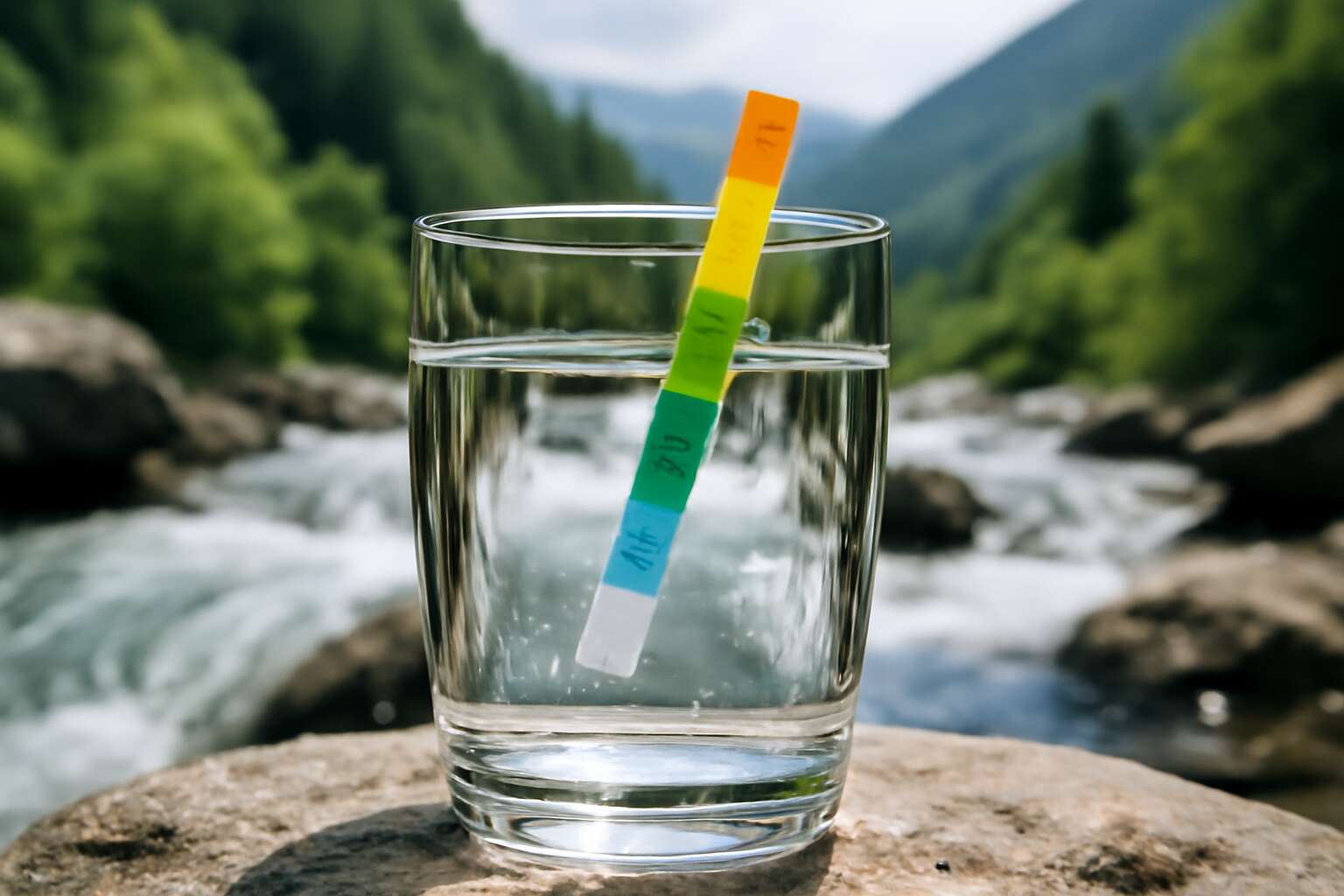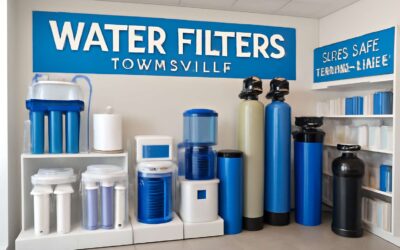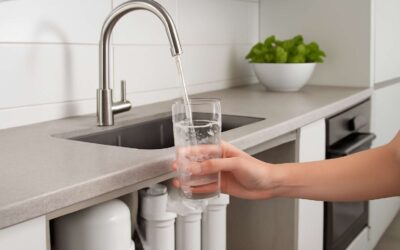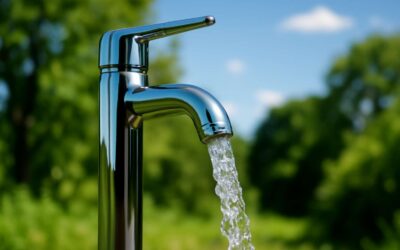Understanding the Importance of pH Levels in Bottled Water
What is pH in Water and Why It Matters
Imagine sipping on water that not only quenches your thirst but also maintains a delicate balance that your body craves. That’s where understanding the importance of pH levels in bottled water becomes vital. The pH level measures the acidity or alkalinity of water, ranging from 0 to 14. For bottled water, a pH between 6.5 and 8.5 is generally considered ideal, ensuring it’s gentle yet effective for hydration.
When it comes to water ph bottled water, the pH level can significantly impact taste, health, and even how your body absorbs minerals. Water with a balanced pH can help maintain your body’s natural pH, supporting overall wellness. Many consumers overlook this aspect, but for those seeking quality hydration, paying attention to water ph bottled water is essential. It’s not just about quenching thirst; it’s about nourishing your body with the right balance, especially in regions like South Africa where mineral content varies widely.
How pH Affects Water Quality and Taste
Understanding the importance of pH levels in bottled water is crucial for both health-conscious consumers and everyday drinkers. The pH of water directly influences its quality and how it interacts with our bodies. Water with a balanced pH, typically between 6.5 and 8.5, ensures that it’s neither too acidic nor too alkaline, which can affect taste and mineral absorption.
When the water pH bottled water falls outside this range, it can lead to noticeable differences in flavor—more metallic or flat—making hydration less enjoyable. Beyond taste, the pH level impacts how the body processes minerals. For example, highly acidic water might contribute to acidity in the body, while alkaline water supports a more neutral internal environment. In regions like South Africa, where mineral content varies significantly, selecting water with an appropriate pH can make a real difference in overall wellness.
To better understand water quality, consider these factors:
- pH’s effect on taste and mineral absorption
- The impact of acidity or alkalinity on health
- How water pH bottled water influences hydration efficiency
Health Implications of Different pH Levels
Understanding the importance of pH levels in bottled water is not just a matter of taste; it is a cornerstone of wellness that often goes unnoticed. In South Africa, where mineral variability varies widely, the water pH bottled water offers can significantly influence our health. When bottled water’s pH drifts outside the optimal range of 6.5 to 8.5, it can subtly impact mineral absorption and overall bodily harmony. A water pH that skews towards acidity may contribute to increased bodily acidity, potentially affecting internal balance. Conversely, alkaline bottled water tends to support a more neutral environment, which many believe enhances hydration efficiency.
Consumers should be mindful of how different pH levels affect their hydration experience. For instance, water with a lower pH might taste metallic or sour, making it less pleasant and possibly discouraging adequate consumption. On the other hand, highly alkaline options could taste flat or soapy, yet still offer benefits for those seeking to balance their body’s pH.
- Water pH bottled water
- Hydration and pH balance
- Health implications of pH levels
These subtle distinctions highlight why choosing bottled water with a balanced pH is essential for maintaining optimal health and enjoying every sip to its fullest potential. In regions like South Africa, where mineral content naturally varies, selecting water with the right pH becomes a vital part of daily wellness routines—an unassuming yet profound act of self-care that echoes in our overall vitality.
Types of Bottled Water Based on pH Levels
Alkaline Bottled Water
Within the shimmering spectrum of bottled water, alkaline varieties stand out as a luminous choice for those seeking a pH balance that whispers of vitality. Alkaline bottled water, with its elevated pH levels often ranging from 8 to 10, offers a refreshing twist on hydration—like sipping from a spring kissed by dawn’s first light. These waters are celebrated not just for their taste but for their potential to neutralize acidity in the body, making them a coveted option in South Africa’s bustling health-conscious scene.
Understanding the different types of bottled water based on pH levels reveals a fascinating landscape. Alkaline bottled water is often derived from natural mineral sources or through electrolysis, giving it a distinct mineral profile that can include calcium, magnesium, and potassium. This mineral richness enhances its appeal, providing more than just hydration—it offers a symphony of natural elements that support overall well-being. For those exploring the nuances of water pH bottled water, the choice often hinges on personal preference and wellness goals, blending science with a touch of nature’s artistry.
Neutral pH Bottled Water
While the allure of alkaline water often steals the spotlight, the humble neutral pH bottled water deserves its moment in the sun—think of it as the classic black tuxedo of hydration: reliable, versatile, and effortlessly elegant. With a pH close to 7, this type of water is the Goldilocks choice—neither too acidic nor too alkaline—making it an ideal companion for those who prefer their water straightforward and true to nature. It’s like the dependable friend who’s always there, ready to quench your thirst without any fuss or surprises.
In the world of water pH bottled water, the neutral variety is often sourced from pristine springs or purified through advanced filtration systems. Its balanced pH ensures it won’t clash with your taste buds or interfere with your body’s delicate acid-alkaline harmony. Whether you’re sipping during a busy workday or unwinding in the South African sun, neutral bottled water provides a consistent, refreshing experience—no drama, just pure hydration.
Acidic Bottled Water
While most consumers gravitate toward neutral or alkaline options, acidic bottled water holds a unique position in the spectrum of water pH bottled water. Typically, with a pH below 7, this type of water is characterized by a tangy or slightly sour taste, which can be surprisingly refreshing in its own right. Its acidity often results from natural mineral content or specific purification processes that retain certain dissolved gases, giving it a distinctive profile.
Some brands of water pH bottled water intentionally craft their product to be slightly acidic, often for targeted health or aesthetic purposes. For example, certain mineral waters with a lower pH may contain trace elements that appeal to enthusiasts seeking specific benefits. However, it’s essential to recognize that consistently consuming highly acidic bottled water might impact dental health or gut balance over time.
In terms of sourcing, acidic bottled water frequently originates from volcanic springs or undergoes filtration that amplifies its natural mineral acidity. Such waters can be classified as water pH bottled water with an intentionally adjusted pH level, often below 6.5. This variation underscores the importance of understanding the diverse range of bottled water options available, each offering a unique sensory and health profile.
Benefits of Drinking Alkaline Bottled Water
Potential Health Benefits
Imagine chugging a glass of water that not only quenches your thirst but also boosts your body’s natural harmony. That’s the magic of drinking alkaline bottled water with the right water pH bottled water. It’s like giving your insides a gentle high-five! Recent studies suggest that maintaining a balanced pH in your water can support your overall health—think of it as a tiny, daily act of self-care with a splash of sophistication.
One compelling benefit of choosing water pH bottled water is its potential to neutralize excess acidity in your system, which can be a sneaky contributor to fatigue and bloating. Plus, alkaline water often contains minerals like calcium and magnesium, which are essential for strong bones and a happy heart. Here’s a quick rundown of potential health benefits:
- Enhanced hydration levels—because your body loves a little extra hydration boost
- Better mineral balance, supporting overall wellness
- Possible detoxification aid, helping to flush out toxins
- Improved taste with a smoother, less metallic flavor
While not a miracle cure, water pH bottled water can be an elegant addition to your hydration routine—making every sip a small step toward a healthier, more vibrant you!
Impact on Hydration and Energy
When it comes to sustaining vitality, hydration is not merely about quenching thirst—it’s about nourishing the very essence of your being. Drinking water pH bottled water can profoundly impact your energy levels, transforming a simple act into a ritual of renewal. The balanced pH of this water helps your body absorb hydration more efficiently, ensuring every cell receives the moisture it craves. As hydration deepens, so does your mental clarity and physical resilience—an invisible yet powerful boost that can carry you through demanding days.
Moreover, water pH bottled water often contains vital minerals like calcium and magnesium, which play a crucial role in maintaining your body’s energy production and muscular function. This mineral synergy supports sustained vitality, counteracting the fatigue that can arise from dehydration or imbalance. While it’s not a miracle, choosing water pH bottled water fortifies your internal landscape, making each sip a deliberate act of self-care with profound implications for your overall well-being.
Common Uses and Consumer Preferences
Choosing the right water ph bottled water can be a game-changer for those seeking optimal wellness. Its benefits extend beyond mere hydration, offering a subtle yet profound influence on overall health. Many consumers gravitate toward alkaline bottled water because of its potential to neutralize excess acidity in the body, which can lead to improved digestion and reduced fatigue. This type of water is often preferred in daily routines, especially for active individuals or those with sensitive stomachs.
Common uses of water ph bottled water include enhancing athletic performance, supporting detoxification processes, and maintaining a balanced pH level in the body. Its versatility makes it suitable for various settings—from gym workouts to office hydration stations. The increasing popularity of alkaline bottled water among health-conscious consumers stems from its ability to provide a cleaner, smoother taste while nourishing vital minerals like calcium and magnesium. These minerals are crucial for maintaining muscle function and energy levels, making water ph bottled water a staple for sustained vitality.
Factors That Influence Bottled Water pH Levels
Source of Water and Filtration Processes
The journey of bottled water from pristine springs to your hand is more than just a simple transit—it’s a delicate dance influenced by a myriad of factors that shape the water’s pH level. The source of water plays a pivotal role; mountain springs often yield water with a naturally balanced pH, while groundwater might lean towards acidity due to mineral interactions underground. But it’s not just nature that determines water pH bottled water—advanced filtration processes are equally influential.
Filtration isn’t merely about clarity; it’s a sophisticated art that can alter pH subtly but significantly. Reverse osmosis, for example, strips away impurities but can also reduce the water’s alkalinity, leading to more acidic bottled water. Conversely, mineral addition during bottling can elevate the pH, creating a more alkaline profile. Understanding these influences helps consumers choose bottled water that aligns with their health and taste preferences, making every sip a part of a carefully crafted experience.
Bottling Techniques and Additives
The subtle art of bottling water involves more than just sealing in freshness; it’s about preserving a delicate balance—particularly the water pH bottled water embodies. Bottling techniques and the choice of additives play a pivotal role in shaping this vital characteristic. Modern filtration methods, such as reverse osmosis, can strip away impurities but often lower the water’s pH, making it more acidic. Conversely, mineral additions are employed to elevate pH levels, giving bottled water a more alkaline profile that appeals to health-conscious consumers.
Sometimes, manufacturers employ specific processes to ensure consistency in water pH bottled water, aligning each bottle with consumer preferences. These techniques might include blending different water sources or adding mineral compounds like calcium or magnesium to influence pH naturally. The intricate dance of filtration and additive use underscores the artistry behind bottled water, transforming raw sources into a pristine, balanced beverage that caters to diverse tastes and health needs.
Storage and Packaging Effects
When it comes to water ph bottled water, storage and packaging are often overlooked but play a crucial role in maintaining that delicate pH balance. Believe it or not, the journey from factory to your glass can alter the water’s acidity or alkalinity—sometimes subtly, sometimes dramatically. Light, temperature, and even the materials used in packaging can influence the pH levels, transforming pristine mineral water into a slightly different beverage by the time it reaches your hand.
For example, exposure to direct sunlight or high temperatures can cause pH fluctuations, making water more acidic over time. Similarly, certain plastics may leach compounds that subtly shift the pH—an unintentional twist in the bottled water storyline. Manufacturers often choose packaging materials carefully, with some opting for glass bottles or BPA-free plastics to preserve the original water ph bottled water. In the end, the integrity of the pH is a testament to meticulous storage and packaging—small details that make a big difference in the quality you sip.
How to Choose the Right Bottled Water Based on pH
Reading and Interpreting pH Labels
Choosing the right bottled water isn’t just about brand or price—it’s about understanding the significance of water pH. A simple pH reading can reveal whether your bottled water is alkaline, neutral, or acidic, which directly impacts its health benefits and taste. When selecting water pH bottled water, pay close attention to the label’s pH value, usually marked on the packaging or in the product description.
Interpreting these labels can be straightforward. For example, bottled water with a pH between 7.0 and 8.5 is generally considered safe and suitable for daily consumption. If the pH is below 7, the water is acidic, and above 8.5, it’s alkaline. Sometimes, labels will specify if the water is “alkaline” or “neutral,” helping consumers make informed choices.
- Look for bottled water with a pH close to neutral for everyday hydration.
- Opt for alkaline bottled water if you seek potential health benefits associated with higher pH levels.
Ultimately, understanding how to choose the right water pH bottled water ensures you’re prioritizing your health while enjoying a refreshing hydration experience.
Considering Personal Health Needs
Choosing the right water pH bottled water isn’t just about quenching your thirst; it’s about aligning hydration with your personal health needs. Our bodies are finely tuned systems, and the pH level of what we drink can influence overall well-being. For those seeking a gentle balance, opting for bottled water with a neutral pH—close to 7—ensures that you aren’t introducing unnecessary acidity or alkalinity into your system. Conversely, if you’re looking to harness potential health benefits associated with alkaline water, selecting a water pH bottled water with higher pH levels might be advantageous.
Understanding your unique health profile can guide your choice. For example, individuals with digestive sensitivities or acid reflux may prefer neutral pH bottled water, while athletes or those interested in detoxification might find alkaline options more suitable. Look for bottled water labels that clearly indicate the pH value, helping you make an informed decision that complements both your lifestyle and wellness goals.
Balancing Cost and Quality
Choosing the right water pH bottled water requires balancing quality and cost, ensuring you get both health benefits and value. While some premium alkaline bottled water can be enticing for its supposed detoxifying properties, it often comes at a higher price point. If budget is a concern, neutral pH bottled water offers a reliable, affordable option without compromising on purity or safety.
To make an informed choice, consider your daily hydration needs and how the pH level aligns with your health goals. For instance, athletes looking to optimize recovery might prefer alkaline water, while individuals with sensitive stomachs may lean toward neutral options. In South Africa, where water quality varies, checking the label for the pH value—usually between 6.5 and 8.5—is essential.
- Look for reputable brands with transparent sourcing
- Check for certification and third-party testing
Ensuring the water’s pH integrity from source to bottle is key to making a smart investment in your hydration routine. Ultimately, the decision hinges on personal health needs, desired benefits, and how much you’re willing to invest in your wellness journey through water pH bottled water.
Regulations and Standards for Bottled Water pH
FDA and International Guidelines
Regulations and standards surrounding water pH bottled water vary across borders, yet a common thread ties them together: ensuring consumer safety and product integrity. In South Africa, the Department of Health mandates that bottled water must meet stringent pH criteria to prevent potential health risks and preserve water quality. Similarly, international guidelines from organizations such as the World Health Organization (WHO) establish recommended pH ranges that safeguard public health while maintaining water’s natural properties.
The U.S. Food and Drug Administration (FDA) stipulates that water pH bottled water should typically fall within a neutral to slightly alkaline range—generally between 6.5 and 8.5. This ensures that bottled water remains palatable and safe for daily consumption. To achieve uniformity and transparency, many producers incorporate rigorous testing and certification processes. These standards are crucial, especially in a global marketplace, where consumers seek consistency and trustworthiness in the products they buy.
- Adherence to national health regulations
- Alignment with international WHO guidelines
- Regular testing for pH levels and contaminants
Such comprehensive regulation not only protects consumers but also promotes a sense of accountability within the bottled water industry. For those choosing water pH bottled water, understanding these standards becomes a vital part of making informed decisions in a landscape where purity and safety are paramount. The global emphasis on maintaining optimal pH levels underscores water’s role as a fundamental human right—something we drink with both trust and appreciation.
Quality Testing and Certification
In the shimmering realm of bottled water, where purity meets science, water pH bottled water stands as a testament to meticulous regulation and unwavering standards. Ensuring that each drop aligns with strict quality testing and certification processes is not merely a regulatory box to tick—it’s a vital safeguard for consumers’ health. The journey from source to bottle involves rigorous analysis of pH levels, alongside contaminant screening, to uphold water’s natural integrity. This meticulous scrutiny guarantees that the bottled water not only quenches thirst but also preserves its essence, free from harmful fluctuations.
Regulatory bodies such as South Africa’s Department of Health and global organizations like the WHO set the stage for these standards. They prescribe a pH range—often between 6.5 and 8.5—that bottled water must adhere to, ensuring an optimal balance of acidity and alkalinity. Industry players often implement comprehensive quality assurance measures, including:
- Regular laboratory testing of water pH bottled water for consistency
- Certification by recognized authorities to boost consumer confidence
- Monitoring of storage and packaging conditions to prevent pH drift
Such layers of scrutiny form a shield of trust, allowing consumers to enjoy water that is not only safe but also reliably high in quality. As the global demand for purified and safe hydration grows, the importance of strict water pH bottled water standards becomes ever more evident—an invisible promise sealed with every pristine sip.
Ensuring Safety and Compliance
In the vast and mysterious realm of bottled water, regulations and standards serve as the invisible guardians of purity. For water ph bottled water, these rules are not merely guidelines—they are the very foundation that guarantees safety and consistency. Regulatory bodies such as South Africa’s Department of Health and international organizations like the WHO impose strict limits on pH levels, typically between 6.5 and 8.5. This range ensures a harmonious balance of acidity and alkalinity, safeguarding consumers from fluctuations that could impact health or taste.
To maintain this delicate equilibrium, industry professionals implement rigorous protocols including:
- Regular laboratory testing of water pH bottled water to ensure ongoing consistency
- Certification by recognized authorities to foster consumer trust
- Monitoring of storage and packaging conditions to prevent pH drift over time
This meticulous oversight creates an unbreakable shield of quality, ensuring each bottle of water ph bottled water upholds the highest standards. As global demand for safe, high-quality hydration surges, the importance of these regulatory frameworks becomes ever more apparent, turning every sip into a pledge of purity and safety.
Future Trends in Bottled Water pH and Innovation
Emerging Technologies in Water Filtration
As the quest for purity and wellness evolves, so too does the landscape of bottled water pH. Future trends suggest a fascinating shift toward hyper-personalized hydration, where consumers seek water with specific pH levels tailored to their unique health needs. Innovation in this realm is not merely about adjusting acidity or alkalinity but about harnessing emerging technologies that allow for precise control of water pH bottled water during the bottling process. This ensures consistency and safety, aligning with increasing regulatory standards and consumer expectations.
One promising development is the integration of advanced water filtration technologies such as electrochemical pH adjustment and nanofiltration, which enable producers to fine-tune the water’s pH with remarkable accuracy. These innovations also help in removing contaminants while maintaining the natural mineral profile, thereby enhancing the overall quality of water pH bottled water. Additionally, sustainable packaging solutions are gaining prominence, reducing environmental impact without compromising the integrity of the pH balance. The future of bottled water pH is poised to be a harmonious blend of technological sophistication and ecological mindfulness, appealing to the discerning South African consumer eager for both health benefits and responsible consumption.
Growing Consumer Awareness
As consumers become increasingly discerning, the future of water pH bottled water is illuminated by a wave of technological innovation. Emerging trends reveal a shift toward hyper-personalized hydration, where individuals seek water tailored precisely to their unique health profiles. This evolution is driven by breakthroughs in advanced water filtration technologies, enabling producers to adjust the water’s pH with remarkable precision during the bottling process.
Innovations like electrochemical pH adjustment and nanofiltration are not just enhancing water quality—they are redefining it. These methods allow for the removal of impurities while maintaining a natural mineral balance, ensuring that water pH bottled water meets the highest safety standards. As sustainability takes center stage, eco-conscious packaging solutions are also gaining traction, reducing environmental impact without compromising the delicate pH balance. This harmonious blend of technological ingenuity and ecological mindfulness is captivating the South African market, appealing to health-conscious consumers eager for purity and sustainability.
Market Predictions and Sustainability
The future of water pH bottled water is poised on the cusp of a remarkable transformation, driven by relentless innovation and an evolving consumer consciousness. As society becomes more aware of the subtle yet profound influence of pH balance on health and hydration, manufacturers are exploring sophisticated methods to tailor water precisely to individual needs. Breakthroughs in advanced water filtration technologies, such as electrochemical pH adjustment and nanofiltration, are not just refining quality—they are redefining what bottled water can be.
In this landscape, sustainability is no longer an afterthought but a fundamental pillar. Eco-conscious packaging solutions are emerging that reduce environmental impact while preserving the delicate pH equilibrium of water. The integration of biodegradable bottles and reduced plastic waste exemplifies this shift. As these innovations gain traction, they resonate particularly well within the South African market, where consumers increasingly seek purity combined with ecological mindfulness.
- Hyper-personalized hydration options tailored to specific health profiles
- Enhanced filtration techniques preserving natural mineral content
- Sustainable, eco-friendly packaging that aligns with global and local environmental goals
These trends are not merely fleeting—they signal a future where water pH bottled water will be defined by a delicate balance of technological brilliance and ecological responsibility. The market predictions suggest that as consumers become more discerning, the demand for water that offers both scientific precision and sustainability will only intensify, shaping a new era of hydration that is as mindful as it is innovative.




0 Comments